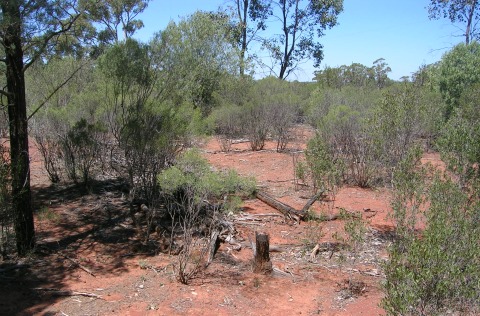Most bird-lovers and conservationists would accept the commonly held view that land clearing for agriculture is one of the greatest threats to Australia’s wildlife, and should be halted at all costs. However throughout vast tracts of western New South Wales and Queensland a different problem has been worsening for over 100 years - and has so far been largely ignored by most conservation groups.
Western NSW landholders claim that grasslands and open woodlands are being invaded by native shrub and tree species (invasive native species - INS - or “woody weeds”) leading to loss of biodiversity and landscape productivity.
The landholders have many supporters among experienced ecologists, botanists, and soil conservationists. In August this year Channel 9 The Sunday Program aired a program entitled “The Great Land Clearing Myth”, focusing on this issue in the vast Cobar Peneplain bioregion of central western NSW.
Advertisement
This bioregion covers about 73,500 square km surrounding the township of Cobar. The program quoted Geoff Cunningham, ecologist and co-author of The Plants of Western NSW: “there are probably many places in Australia where one would say land clearing is undesirable, but the problem is that in this area it’s different.”
Dick Condon, former Western Lands Commissioner, soil scientist, and author of Out of the West, concurred: “the original native grasses were very tall and very deep rooted and the trees were a long way apart.” He claimed there are 12 million hectares (or 120,000 square km) of grasslands and open woodlands throughout western NSW that are invaded and degraded by “woody weeds”, and that the problem is worsening with time.
The original explorers and early pastoralists of this region described a mosaic landscape of thick luxuriant grasslands, open woodlands, and patches of dense shrub lands. The vital tool for maintaining this landscape was fire, both natural from lightning strikes and deliberately lit by the Aboriginals.
It appears that periodically a series of favourably wet summers caused the massive germination of the invasive native shrub and tree species, and at the same time caused luxuriant growth of native grasses. When the inevitable dry conditions returned the vegetation was ripe for hot fires fuelled by the dry grasses. These fires destroyed the young shrubs and trees, allowing the grasses to dominate the landscape.
Early settlement caused massive changes to the ecology of the region. Grasslands were overgrazed, fires were put out, native shrubs and trees began to invade grasslands as early as 1870, rabbits invaded, drought struck, and wool prices collapsed.
By 1901 the Western Division of NSW was in an economic and ecological crisis, and a Royal Commission was called to try and formulate some solutions. Today landholders claim they are still battling the invading scrub, and that recently introduced native vegetation regulations are making their job almost impossible.
Advertisement
Six species are designated as Invasive Native Species or INS in the Native Vegetation Conservation Act 1997. In addition some further species can behave as INS in some areas, and are listed (PDF 99KB) as such by different Catchment Management Authorities. Over time these Invasive Native Species form woodlands and shrublands of increasing density. Living groundcover (grasses and forbs) are starved for moisture and light and gradually disappear, leaving bare ground, leaf litter, and fallen branches.
The author took the following two photographs on a property near Cobar in September 2006. Picture 1 shows a dense woody shrubland with loss of groundcover. Picture 2 shows regenerating grassland after clearing of the shrubland.

Discuss in our Forums
See what other readers are saying about this article!
Click here to read & post comments.
18 posts so far.